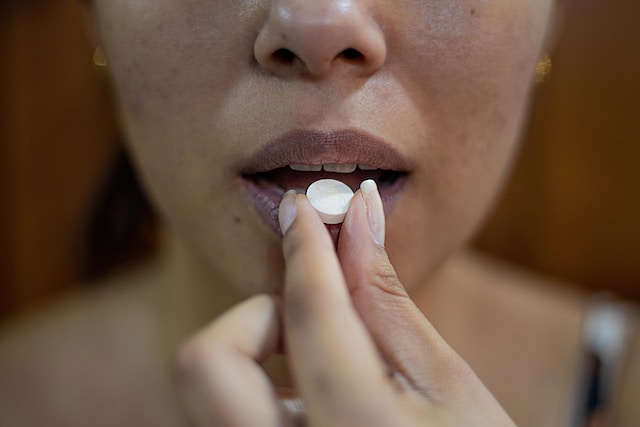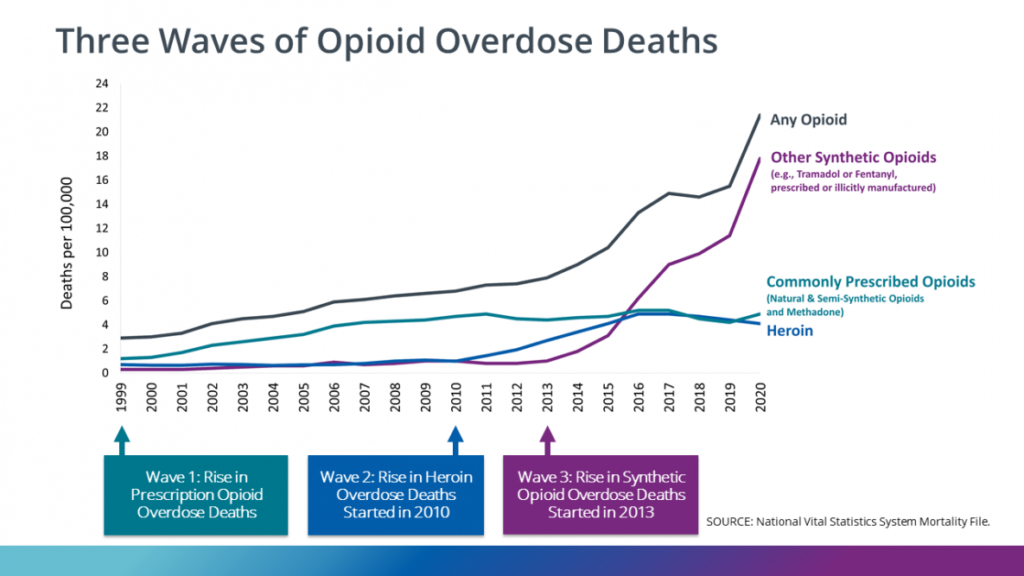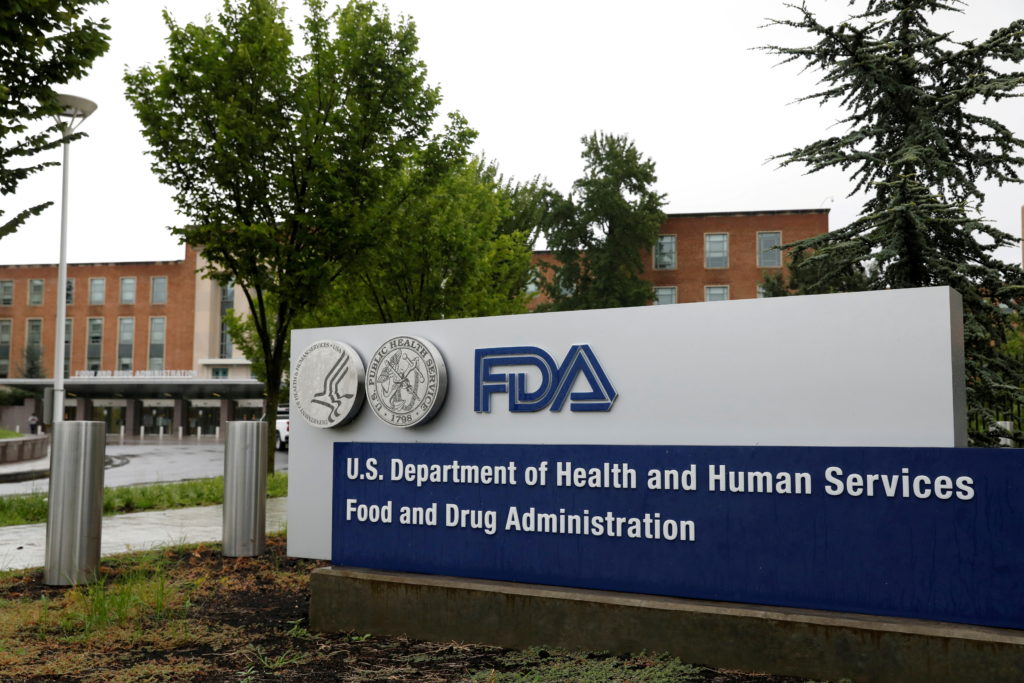If you or a loved one is struggling with drug and/or alcohol addiction, call us for help: 866-693-1454

Medication-Assisted Treatment (MAT) is a treatment approach that utilizes medications in combination with counseling and behavioral therapies to address substance use disorders.
MAT has been shown to be an effective method for treating opioid, alcohol, and tobacco dependence.
The medication component of MAT helps alleviate withdrawal symptoms and cravings associated with substance use disorder.
The therapy component addresses the underlying issues related to addiction such as trauma, mental illness, and social factors.
When used together, these components provide individuals struggling with addiction a comprehensive approach to recovery.
In this article, we will explore the different types of medications used in MAT and how they work in conjunction with therapy to support long-term recovery.
Medicatoin Assisted Treatment For Substance Abuse Disorders
Medication-assisted treatment (MAT) is a highly effective approach to treating substance use disorders, specifically opioid use disorders.
This type of therapy combines the use of FDA-approved medications like methadone and buprenorphine with behavioral health interventions such as counseling and peer support services.

The goal of medication-assisted treatments is to reduce cravings and withdrawal symptoms while increasing an individual’s chances of long-term recovery.
Opioid settlement payouts have allowed for more people to access MAT programs across the country. These funds have been used towards expanding existing MAT programs or creating new ones in areas that previously lacked access to these critical resources.
As a result, individuals struggling with opioid addiction can receive life-saving treatments without financial burden.
The effectiveness of MAT has been demonstrated time and time again through research studies and real-world data.
In addition to reducing cravings and withdrawal symptoms, patients who participate in medication-assisted treatment also experience lower rates of relapse compared to those who only receive traditional forms of addiction treatment.
Overall, combining medication with behavioral health interventions provides a comprehensive approach to addressing substance abuse disorders and improving patient outcomes.
Understanding The Opioid Epidemic
The opioid epidemic is a serious health crisis in the United States, with an estimated 130 people dying every day due to opioid-related overdoses. It is believed to have been caused by a combination of factors such as over-prescribing of opioids, the emergence of powerful synthetic opioids, and a lack of access to treatment.
The effects of the opioid epidemic are far-reaching, with increased rates of drug abuse, increased mortality rates, and increased costs to the health care system.
One potential solution to this epidemic is medication-assisted treatment (MAT), which combines behavioral therapy with the use of medications to treat substance use disorders. MAT has been shown to be effective in reducing opioid use, improving social functioning, and reducing mortality.
With proper implementation, MAT could be an effective tool in combating the opioid crisis.

Causes Of Opioid Epidemic
Opioid use disorder has been a growing concern in the United States, with prescription opioids being one of the main culprits. The opioid epidemic can be attributed to various factors such as easy accessibility and overprescription of painkillers, lack of awareness regarding harm reduction strategies, and limited access to addiction medicine resources.
Rural communities are particularly vulnerable as they often have fewer healthcare providers who specialize in treating opioid addiction. Medication-assisted treatment (MAT) is an evidence-based approach that combines medication for addiction treatment with counseling and behavioral therapies to address opioid use disorder. Nurse practitioners and other providers play an essential role in delivering MAT services, especially in areas where there may be a shortage of physicians trained in addiction medicine.
However, some barriers remain when it comes to providing clinical support system for these providers. One example would be the need for better reimbursement policies from insurance companies to cover MAT services.
To effectively tackle the opioid crisis requires a comprehensive approach that addresses its root causes while also ensuring access to care for those affected by substance use disorders. Harm reduction strategies including safe injection sites and naloxone distribution programs should be implemented alongside efforts to reduce prescription drug misuse.
By addressing the complex challenges associated with this public health issue through evidence-based approaches like MAT, we can help individuals overcome their addictions and improve outcomes for our communities overall.
Effects Of Opioid Epidemic
As we continue to understand the opioid epidemic, it is important to acknowledge its devastating effects on individuals and communities. Opioid use disorder not only impacts physical health but also social functioning, economic stability, and mental well-being. The effects of the opioid epidemic are far-reaching and require a multi-faceted approach to address.
One effective treatment for addressing opioid use disorder is medication-assisted treatment (MAT). MAT combines FDA-approved medications with counseling and behavioral therapies to reduce cravings and withdrawal symptoms while improving access to care. This evidence-based approach has been shown to be an effective treatment option for those struggling with opioid addiction.
By increasing access to MAT services, healthcare providers can help individuals overcome their addictions and improve outcomes for our communities overall. It is essential that policymakers prioritize funding for these resources in order to effectively combat the opioid epidemic.
By acknowledging the harmful effects of this crisis and implementing evidence-based solutions like MAT, we can work towards a future where individuals receive the support they need to achieve long-term recovery from opioid use disorder.
Solutions To Opioid Epidemic
As a counselor, it is crucial to understand the solutions available for addressing the opioid epidemic.
One evidence-based solution that has been shown to be effective in treating individuals with opioid use disorder is medication-assisted treatment (MAT). MAT combines FDA-approved medications, such as buprenorphine or methadone, with counseling and behavioral therapies to reduce cravings and withdrawal symptoms while improving access to care. This approach can significantly improve outcomes for those struggling with substance abuse and mental health issues.
In addition to MAT, policymakers must also prioritize funding for other resources that address the opioid epidemic. Prescription drug monitoring programs are essential tools for tracking prescription drug use patterns and identifying potential cases of addiction. Access to naloxone, a medication used to reverse opioid overdoses, can also save lives and prevent fatal overdose incidents. By investing in these resources, communities can work towards reducing harm caused by opioid misuse.
When developing a treatment plan for clients with opioid use disorder, it is important to recognize that recovery is a journey rather than a destination. While MAT may be an effective tool for some individuals, others may require additional support through individual or group therapy sessions. Counselors should strive to provide personalized care plans that meet their client’s individual needs while remaining grounded in evidence-based strategies like medication-assisted treatment.
With continued efforts from healthcare providers and policymakers alike, we can work towards ending the devastating effects of the opioid epidemic on our communities.
What Is Medication-Assisted Treatment (Mat)?
Medication-Assisted Treatment (MAT) is a form of treatment for individuals with opioid use disorder (OUD). It involves the use of medications for opioid addiction in conjunction with behavioral therapy and counseling.
MAT has been shown to be effective in reducing opioid cravings, preventing relapse, and improving overall quality of life. There are several medications used in MAT such as methadone, buprenorphine, and naltrexone.
These medications work by targeting the same receptors in the brain that opioids do but without producing the euphoric effects associated with drug abuse. They can also help manage withdrawal symptoms and reduce cravings for opioids.
However, access to these medications may vary depending on location and availability of treatment facilities. Despite its effectiveness, accessibility to MAT remains an issue.
According to the National Center on Addiction and Substance Abuse, only one-third of specialty substance abuse treatment programs offer FDA-approved medication-assisted treatments for OUD. There is a need for more education and training among healthcare providers to increase awareness about the benefits of MAT as well as improve accessibility to it for those seeking treatment for OUD.
In order to effectively address the growing problem of opioid use disorder, treating OUD through Medication-Assisted Treatment should be considered alongside other forms of behavioral therapy or counseling. With increased awareness regarding its efficacy combined with improved accessibility to it nationwide, there is potential for greater success in fighting this epidemic at both individual and societal levels.
Types Of Medications Used In Mat
Treatment for opioid use disorder (OUD) can be challenging and complex. However, medication-assisted treatment (MAT) is an effective approach that has helped many individuals recover from substance abuse. MAT involves the use of medications in combination with counseling and behavioral therapies to treat OUD.
There are different types of medications used in MAT, each with its unique benefits. One commonly used medication in MAT is buprenorphine. It is a partial opioid agonist that reduces cravings and withdrawal symptoms without causing the same level of euphoria as other opioids. Buprenorphine can be prescribed by qualified healthcare providers in various settings, including primary care offices, hospitals, and clinics.
Another medication used in MAT is methadone, which is a full opioid agonist that works similarly to other opioids but at a slower pace. Methadone can only be dispensed through specialized treatment centers due to its potential for misuse. In recent years, there has been increasing interest in long-acting injection formulations for OUD treatment.
The FDA approved extended-release injectable naltrexone for the prevention of relapse after detoxification back in 2010. In 2021, another long-acting injectable product called buprenorphine extended-release was also granted approval by the FDA for use in MAT programs. These new options offer several advantages over traditional oral medications since they require less frequent dosing and thus reduce the risk of non-adherence or diversion.
Medication-assisted treatment (MAT) provides a comprehensive approach to treating opioid use disorder (OUD). While counseling and behavioral therapies play essential roles in this process, it’s important not to overlook the critical role played by pharmacotherapy to help patients achieve sustained recovery outcomes. With various types of medications available for MAT such as buprenorphine, methadone, and long-acting injections like extended-release naltrexone or buprenorphine, healthcare providers can tailor treatment plans to address the unique needs of each individual patient.
How Does Mat Work?
Medication-assisted treatment (MAT) is a type of addiction treatment that utilizes medication to manage withdrawal symptoms and cravings associated with opioid use disorder. MAT combines the use of FDA-approved medications, such as buprenorphine and methadone, with counseling and behavioral therapies to provide comprehensive care for individuals struggling with opioid dependency. This approach has been proven effective in reducing substance abuse, preventing relapse, and improving overall quality of life.

The main goal of medication assisted treatment for opioid use disorder is to help patients reduce their dependence on opioids by minimizing withdrawal symptoms and eliminating drug cravings. Medications used in MAT work by blocking the effects of opioids or reducing their intensity when taken.
Buprenorphine, for example, works by partially activating opioid receptors while also blocking them from other opioids trying to bind to them. Methadone, on the other hand, activates these same receptors fully but more slowly than other opioids like heroin or fentanyl. By controlling opioid cravings and providing relief from withdrawal symptoms through medication management, people are better able to engage in therapy sessions that address the root causes of their addiction.
Medication-assisted treatment programs have been shown to be highly effective at treating opioid addiction when combined with counseling and behavioral therapies. Patients who receive MAT experience fewer instances of overdose, reduced criminal activity related to drug use, improved employment outcomes, and an overall increase in general health measures compared to those who do not receive this form of intervention.
In summary, medication-assisted treatment provides individuals suffering from opioid use disorder with a well-rounded approach towards recovery that can improve their chances for long-term success in maintaining sobriety without experiencing debilitating physical or psychological side effects commonly seen with traditional detoxification methods alone.
Benefits Of Mat For Opioid Addiction
MAT, or medication-assisted treatment, is a highly effective form of treatment for individuals struggling with opioid addiction. MAT combines the use of FDA-approved medications such as buprenorphine and methadone with counseling and behavioral therapies to treat opioid use disorder. The benefits of MAT include reducing drug cravings and withdrawal symptoms, improving overall physical health, and decreasing the risk of fatal opioid overdose.
One significant benefit of MAT is that it helps to prevent suicide among individuals struggling with opioid addiction. Research has shown that those who receive MAT are less likely to attempt or die by suicide than those who do not receive this type of treatment. This is because MAT addresses both the physical and psychological aspects of addiction, providing patients with comprehensive care that can help them better manage their mental health concerns.
Another important benefit of MAT is its ability to reduce criminal behavior associated with opioid addiction. Many individuals battling opioid use disorder turn to criminal activity in order to obtain drugs or support their habit. However, studies have found that when these same individuals receive MAT, they are more likely to stay in treatment longer, experience fewer relapses, and commit fewer crimes overall.
Buprenorphine and methadone are two commonly used medications in MAT for opioid addiction treatment. These medications work by binding to the same receptors in the brain as opioids but with less intensity, helping to curb cravings without producing a high. While there may be some side effects associated with these medications, they are generally safe when administered under medical supervision.
Overall, MAT has proven successful in treating opioid addiction and should be considered as an option for anyone struggling with this condition.
Limitations Of Mat
The medication-assisted treatment (MAT) approach to the treatment of opioid use disorder (OUD) has been widely accepted as an effective means for reducing cravings, managing withdrawal symptoms, and preventing relapse. The two most commonly used medications in MAT are buprenorphine and methadone. However, despite its effectiveness, there are limitations to this approach that require further exploration.
One limitation is that not all individuals with OUD may be eligible or willing to undergo MAT due to various reasons such as lack of access to healthcare services, stigma associated with addiction treatment, etc. Additionally, some individuals may not respond positively to either buprenorphine or methadone therapy leading to ineffective outcomes. Furthermore, since these drugs can still lead to dependence and have a potential for abuse themselves if taken improperly, they need careful monitoring which requires resources and expertise.
Another limitation of MAT is related to adherence issues among patients who receive it. Practice guidelines recommend that MAT should be accompanied by counseling and other psychosocial interventions; however, not every patient receives adequate support in this regard. Patients who do not follow their dosage regimen properly or miss appointments altogether may experience negative consequences like increased withdrawal symptoms or even overdose risk.
In conclusion, while medication-assisted treatment remains a valuable tool in the management of OUD – especially when combined with behavioral therapies- several limitations exist that must be considered before implementation. These include eligibility criteria for receiving MATs as well as adherence issues among patients undergoing it. Therefore providers should carefully consider these factors when devising strategies for treating opioid use disorders using medication-assisted treatments.
Potential Side Effects Of Mat
Medication-assisted treatment (MAT) is used to help treat individuals with substance use disorders.
It is important to consider the potential side effects of MAT.
Short-term side effects can include fatigue, nausea, headaches, and insomnia.
Long-term side effects may involve a risk of physical dependence, mental confusion, and impaired cognitive functioning.
Short-Term Side Effects
Medication-assisted treatment (MAT) is a proven method of treating opioid use disorder (OUD). It combines medication with counseling and behavioral therapies to help individuals overcome addiction.
While MAT has been shown to be effective, it also comes with potential side effects that patients should be aware of. One common short-term side effect of MAT is constipation. Constipation is frequently reported among individuals taking medications such as buprenorphine and methadone for the treatment of opioid addiction. This side effect can lead to discomfort and pain, making it difficult for patients to adhere to their medication regimen. In addition, chronic constipation can result in more serious health problems over time if left untreated.
Another short-term side effect of MAT is nausea or vomiting. These symptoms are most commonly associated with induction – the process by which patients start taking medication-assisted treatment. Nausea and vomiting may occur during the first few days or weeks of treatment but typically subside on their own without intervention. However, if these symptoms persist or worsen over time, patients should speak with their healthcare provider about alternative options for assist treatment.
In conclusion, while medication-assisted treatment can effectively treat opioid addiction, there are potential short-term side effects that must be taken into consideration when choosing this form of therapy. Constipation and nausea/vomiting are two common side effects that may arise during the course of MAT. Patients should work closely with their healthcare providers to manage any adverse reactions they experience so that they can continue receiving the benefits of this important form of assistance treatment.
Long-Term Side Effects
It is important for patients undergoing medication-assisted treatment (MAT) to be aware of potential long-term side effects. While MAT has been proven effective in treating opioid use disorder (OUD), the U.S. Food and Drug Administration (FDA) warns that certain medications used in this form of therapy can lead to serious health problems if taken over an extended period.
One example of a long-term side effect associated with MAT is respiratory depression, which occurs when breathing slows down to dangerous levels. This risk is particularly high among individuals taking methadone or buprenorphine, as these drugs are opioids and have similar effects on the body’s respiratory system. Patients should be closely monitored by their healthcare providers while receiving MAT to avoid complications related to respiratory depression.
Another potential long-term side effect of MAT is liver damage, which may occur due to prolonged use of certain medications such as methadone. The FDA advises regular monitoring of liver function tests during MAT to detect any signs of liver injury early on. Additionally, patients should avoid consuming alcohol or other substances known to cause liver damage while undergoing treatment.
Overall, while medication-assisted treatment is an effective option for treating opioid addiction, it is crucial for patients and healthcare providers alike to be mindful of potential long-term side effects.
Respiratory depression and liver damage are just two examples of adverse reactions that can arise from extended drug administration. By staying vigilant and working together with medical professionals, patients can maximize the benefits of MAT while minimizing the risks involved.
Is Mat Right For You?
Making the decision to seek treatment for opioid use disorder can be an emotional and overwhelming experience. It is important to consider all options available, including medication-assisted treatment (MAT), in order to make an informed choice about what will work best for you. MAT involves the use of medications such as buprenorphine or methadone, combined with clinical support and counseling.

Here are some factors to consider when deciding if MAT is right for you:
- Medical history: Your medical history plays a significant role in determining whether MAT is appropriate for you. Individuals who have severe liver disease may not be able to tolerate certain medications used in MAT.
- Co-occurring conditions: If you also struggle with alcohol use disorder or other substance abuse and mental health issues, it’s essential that your provider takes these into account before prescribing any medication.
- Financial considerations: While Medicaid coverage exists for many individuals seeking addiction treatment, there may still be out-of-pocket expenses associated with receiving MAT.
- Provider expertise: Not all healthcare providers are trained in providing MAT. Ensure that your provider has received adequate training and technical assistance, including online trainings.
In conclusion, while MAT is not the only option on the table, it can be an effective tool in managing opioid use disorder when coupled with appropriate clinical care and counseling. By taking into account your individual circumstances — from medical history to financial considerations — you can make an informed decision alongside your healthcare provider regarding whether this approach would benefit your recovery journey.
Finding The Right Mat Program
When seeking medication-assisted treatment (MAT) for opioid use disorder, it is crucial to find the right MAT program. The clinical setting in which individuals receive MAT can significantly impact their outcomes and recovery success rates. Research indicates that effective MAT programs should offer a comprehensive approach that incorporates substance abuse and mental health services.
One way to identify an appropriate MAT program is by assessing its accreditation status. Accreditation from reputable organizations such as the Substance Abuse and Mental Health Services Administration (SAMHSA) ensures that the program meets high standards of care delivery. Additionally, finding a clinic with experienced staff members who specialize in addiction medicine or family medicine can increase one’s chances of receiving personalized and evidence-based treatment.
Another aspect to consider when choosing an MAT program is vulnerability disclosure policies. It is essential to select a facility where clients feel safe sharing personal information about their struggles with addiction without fear of negative consequences or judgment from clinicians. In this regard, patients should look for clinics that prioritize confidentiality, respect, and empathy towards their clientele.
Ultimately, selecting the right MAT program depends on various factors unique to each individual struggling with addiction. However, by considering elements such as accreditation status, clinical experience, and vulnerability disclosure policies, those seeking help can make informed decisions about their path towards recovery.
The Role Of Counseling And Behavioral Therapies In Mat
The role of counseling and behavioral therapies in medication-assisted treatment (MAT) is crucial for individuals with substance abuse or opioid use disorder. Counseling provides patients with the necessary tools and support to manage their addiction by addressing underlying mental health issues, which often accompany substance abuse. This approach enhances the effectiveness of MAT as it addresses both physical and psychological aspects of addiction.

Behavioral therapies focus on changing negative behaviors that lead to substance abuse while promoting positive ones. Cognitive-behavioral therapy (CBT), contingency management (CM), motivational interviewing (MI), and dialectical behavior therapy (DBT) are some commonly used approaches in clinical settings.
CBT aims to change maladaptive thoughts and beliefs about drugs or alcohol through self-awareness, goal setting, and learning coping skills. CM reinforces positive behaviors such as abstinence through incentives like vouchers or prizes. MI helps clients overcome ambivalence towards recovery by exploring their values, goals, and motivations for change. DBT combines individual therapy sessions with group skills training focusing on distress tolerance, emotional regulation, mindfulness, and interpersonal effectiveness.
Counseling and behavioral therapies prevent relapse by helping patients cope with triggers and stressors without resorting to drug use. They also provide a supportive environment where patients can openly discuss their struggles with addiction while receiving guidance from trained professionals.
Through these interventions, individuals undergoing MAT acquire lifelong skills that promote long-term recovery beyond the period of medication administration.
The Importance Of Individualized Treatment
Individualized treatment is essential in the success of medication-assisted treatment (MAT) for individuals with substance abuse and mental health issues. MAT involves the use of medications to manage withdrawal symptoms, reduce cravings, and prevent relapse. However, not all patients respond similarly to a specific drug or dosage. Therefore, it is crucial to tailor the MAT plan based on individual needs.
Research shows that providing clinical care tailored to an individual’s unique characteristics leads to better outcomes in treating opioid use disorder (OUD). The customization process includes evaluating patient history, current physical and mental health status, as well as any other co-occurring conditions. Furthermore, monitoring response to therapy regularly can help adjust medication doses or switch drugs if needed. By doing so, clinicians can ensure maximum effectiveness while minimizing adverse effects.
The Society of Addiction Medicine (ASAM) and American Society of Addiction have emphasized the importance of personalized care in their recent webinar series on addiction medicine. Additionally, drug court programs require customized plans for participants receiving MAT services.
To sum up, considering personal circumstances when developing a MAT program could lead to long-lasting recovery from OUD or other types of addiction disorders.
Stigma Surrounding Mat And Addiction
Individualized treatment is crucial in addressing substance abuse and mental health issues. However, medication-assisted treatment (MAT) has emerged as a vital tool that provides clinical support for individuals struggling with opioid use disorder (OUD).
MAT combines the use of medication approved by the Food and Drug Administration (FDA) with behavioral therapies to treat addiction effectively. It also prevents opioids from producing euphoric effects, reducing cravings, and minimizing withdrawal symptoms.
Moreover, MAT can also be used to treat alcohol abuse disorders. The FDA has approved specific medications like naltrexone and acamprosate to reduce alcohol cravings and help sustain long-term recovery. These medications are usually administered alongside counseling or therapy sessions to address underlying psychological factors contributing to addiction.
Thus, MAT offers individualized care plans tailored to suit an individual’s unique needs while treating both physical and psychological aspects of addiction. Despite its success rate, stigma surrounding MAT remains prevalent in rural communities where access to community health resources may be limited.
This perception stems from misinformation about the effectiveness of this form of treatment and lack of knowledge regarding how it works. As counselors in these areas seek ways to combat opioid use disorder (MOUD), they must educate their patients on the benefits of MAT as part of comprehensive rehabilitation programs.
By doing so, more people will embrace evidence-based treatments leading towards successful outcomes. In conclusion, medication-assisted treatment provides a comprehensive approach for managing substance abuse and mental health issues effectively. MOUD promotes abstinence while simultaneously improving quality life through behavior modification techniques such as counseling or therapy sessions tailored uniquely for each patient’s needs.
Counselors play a critical role in educating patients on the benefits of MAT while dispelling myths that contribute significantly to stigma among rural communities’ population suffering from OUD or other addictive behaviors beyond opioids.
Overcoming Barriers To Seeking Treatment
- Financial concerns are a common barrier to seeking treatment, especially for those without health insurance or the ability to pay out of pocket.
- Unfortunately, stigma and shame surrounding medication-assisted treatment (MAT) still exist, and this can be a major obstacle for individuals seeking care.
- Access to care is also an issue, as there are often geographic or transportation barriers that prevent people from receiving the help they need.
- It is important to understand that seeking treatment for addiction does not reflect negatively on a person and can be a beneficial step toward recovery.
- For those with financial concerns, there are often options available to access MAT, such as sliding fee scales or government programs.
- It is important to be aware of the resources available to aid in the process of seeking treatment, such as support groups and online resources.
Financial Concerns
One of the significant barriers to seeking medication-assisted treatment (MAT) is financial concerns. The cost of MAT can be a deterrent for people who are considering this type of treatment. Although some insurance plans cover MAT, others do not or have limited coverage. Additionally, co-pays and deductibles associated with insurance plans may add up quickly.
It’s essential to understand that there are resources available for individuals who cannot afford MAT or don’t have adequate insurance coverage. Many states offer Medicaid programs that provide comprehensive addiction treatment services, including MAT, to eligible low-income individuals. Federally funded health centers also offer affordable medical care, including substance abuse treatment services.
In conclusion, while financial concerns can pose a barrier to accessing MAT, it’s crucial to explore all options before dismissing the possibility of starting this type of treatment. Healthcare providers should educate patients on available resources and work collaboratively with them to develop an individualized plan that meets their unique needs and circumstances.
With proper guidance and support from healthcare professionals and community organizations, people struggling with opioid addiction can overcome financial obstacles and access life-saving medication-assisted treatment.
Stigma
Another significant barrier to seeking treatment for opioid addiction is stigma. Stigma refers to negative attitudes and beliefs about individuals who struggle with substance use disorders, which can lead to discrimination and marginalization. The fear of being judged or labeled as an addict often prevents those in need from seeking help.
It’s crucial to recognize that addiction is a chronic disease that requires medical attention and not a moral failing or lack of willpower. Healthcare providers must educate patients on the nature of addiction and address any misconceptions they may have about the condition.
Creating a safe and non-judgmental environment where individuals feel comfortable sharing their struggles is essential in overcoming stigma associated with opioid addiction.
Community organizations also play a vital role in reducing stigma by promoting understanding and empathy towards people affected by substance use disorders. By raising awareness through education campaigns, support groups, and advocacy efforts, community organizations can change public perception around addiction and encourage more people to seek treatment without fear of judgment or discrimination.
Access To Care
One of the most significant barriers that individuals with opioid addiction face is access to care. Many people may not have health insurance or financial resources to pay for treatment, while others live in areas where there are few healthcare providers who specialize in addiction medicine. Limited availability of medication-assisted treatments (MAT) and long wait times can also discourage those seeking help.
To overcome this barrier, it’s essential to improve access to care for those struggling with opioid addiction. Governments and private organizations should invest in expanding access to affordable, evidence-based treatments such as MAT, behavioral therapies, and peer support services. This includes providing funding for specialized training programs for healthcare professionals and increasing the number of facilities offering comprehensive addiction treatment.
In addition, telehealth technology has become increasingly popular during the COVID-19 pandemic and could be an effective tool in improving access to care for opioid addiction treatment. Telemedicine can provide patients with remote consultations with healthcare providers, allowing them to receive medical advice and counseling from the comfort and safety of their homes without having to travel long distances or face potential stigma associated with seeking help openly.
By improving access to care through these measures, we can reduce the burden of opioid addiction on individuals, families, communities, and society at large.
Mat And Pregnancy

Pregnancy is a critical stage in the life of any woman, and it requires careful management to ensure both maternal and fetal health.
Women who struggle with substance use disorder face even greater challenges during pregnancy as their addiction can negatively impact their well-being and that of their unborn child.
Medication-assisted treatment (MAT) has been an effective intervention for individuals battling opioid addiction, but its safety during pregnancy remains a topic of debate.
Studies have shown that MAT can reduce the risk of relapse among pregnant women struggling with opioid addiction.
It involves using medication such as methadone or buprenorphine alongside counseling and other support services.
While there are concerns about the potential risks associated with these medications on fetal development, research indicates that babies born to mothers undergoing MAT show no significant differences in terms of cognitive or motor skills compared to those not exposed to opioids in utero.
However, just like any medical intervention, MAT should be closely monitored by healthcare providers throughout pregnancy.
The dosage may need to be adjusted based on changes in body weight or metabolism, and regular check-ups should be conducted to monitor the mother’s health status and identify any potential complications early on.
With proper care and monitoring, MAT can provide much-needed relief for expectant mothers struggling with opioid addiction while minimizing harm to themselves and their infants.
Mat And Co-Occurring Mental Health Disorders
Individuals seeking treatment for substance use disorder (SUD) may also present with co-occurring mental health disorders. According to the Substance Abuse and Mental Health Services Administration (SAMHSA), about 8 million adults in the United States have both a mental health disorder and SUD.
In these cases, medication-assisted treatment (MAT) can be an effective approach. Research has shown that MAT can improve outcomes for individuals with co-occurring mental health disorders, such as depression or anxiety.
For example, studies have found that patients receiving methadone maintenance therapy had significant reductions in symptoms of depression compared to those who did not receive MAT. Similarly, buprenorphine has been shown to reduce anxiety symptoms in individuals with opioid use disorder.
It is important for clinicians providing MAT to carefully evaluate and monitor patients with co-occurring mental health disorders. This includes assessing for potential drug interactions between medications used to treat SUD and psychiatric medications.
Additionally, counseling services should be provided alongside MAT to address underlying emotional and psychological factors contributing to substance use. By taking a comprehensive approach that addresses both SUD and co-occurring mental health issues, MAT can lead to improved outcomes and overall wellness for patients.
The Role Of Support Systems In Mat

Support systems play a crucial role in medication-assisted treatment (MAT) for individuals with substance use disorders. These support systems may include family members, friends, peers, and healthcare professionals who provide emotional and practical assistance to the person undergoing MAT.
The primary goal of these support systems is to promote recovery by ensuring that the individual receives the necessary care and attention they need during their treatment journey.
One of the key benefits of having a strong support system while undergoing MAT is that it can help reduce feelings of isolation and loneliness. Substance use disorders often lead to social isolation as individuals tend to withdraw from their loved ones due to stigma and shame associated with addiction.
However, with a supportive network around them, individuals are more likely to feel connected, valued, and understood throughout their recovery journey.
Moreover, support systems can also offer practical assistance such as transportation to appointments or helping manage daily responsibilities like childcare or work commitments. Such assistance helps alleviate some of the stressors that may trigger relapse episodes, enabling individuals in MAT programs to maintain sobriety successfully.
Therefore, building robust support networks should be an integral part of any comprehensive MAT program aimed at promoting long-term successful outcomes for persons in recovery.
Success Stories: Real-Life Experiences With Mat
- MAT has been shown to improve the health, quality of life and outcomes of individuals who have struggled with addiction.
- Positive outcomes are typically seen in areas such as reduced substance use, improved physical health, improved mental health and increased social functioning.
- The life-changing benefits associated with MAT include decreased cravings, improved ability to focus, reduced risk of relapse and improved overall quality of life.
- MAT is a safe and effective form of treatment for individuals with substance use disorders, and is often an important part of the recovery process.
Positive Outcomes
The positive outcomes of medication-assisted treatment (MAT) are numerous and impactful. Individuals who have undergone MAT often report feeling more stable, less anxious, and able to function in their daily lives with greater ease. Specifically, those receiving MAT for opioid use disorder have shown improved retention in treatment programs, decreased risk of overdose, reduced criminal activity, and an overall improvement in quality of life.
One success story involves a young woman named Sarah who struggled with heroin addiction for several years before starting on buprenorphine maintenance therapy through MAT. Prior to beginning her treatment regimen, Sarah had been unable to hold down a job and was estranged from her family due to her drug use. However, after several months on buprenorphine, she reported that she felt like herself again – no longer experiencing the intense cravings or withdrawal symptoms that led her back to using heroin time and time again.
With the help of counseling services provided by her MAT program, Sarah was also able to repair relationships with loved ones and secure steady employment for the first time in years.
Another example is John, a middle-aged man who had struggled with alcoholism for most of his adult life. After multiple attempts at traditional 12-step programs failed him, John turned to naltrexone as part of his MAT plan. This medication helped reduce the pleasurable effects he experienced when drinking alcohol which made it easier for him to abstain altogether.
Over time, John’s mood stabilized significantly allowing him better control over his impulses leading him towards long-term sobriety.
Overall, there is strong evidence supporting the effectiveness of MAT in improving outcomes for individuals struggling with substance use disorders such as opioids or alcoholism. The experiences shared by Sarah and John illustrate how medications used alongside counseling can offer much-needed support during recovery journeys while helping people regain control over their lives without relying solely on willpower alone.
Life-Changing Benefits
As counselors, it is important to recognize and celebrate the success stories that come out of medication-assisted treatment (MAT). Through MAT, individuals struggling with substance use disorders have found life-changing benefits that have allowed them to regain control over their lives. These benefits include improved physical and mental health, better relationships with loved ones, increased stability in employment or education, and an overall improvement in quality of life.
For example, one individual who received MAT for opioid addiction reported feeling more stable, less anxious, and able to function in daily life with greater ease. This person experienced a reduction in cravings and withdrawal symptoms which previously led them back to using opioids repeatedly. With counseling services provided by their MAT program, they were also able to repair relationships with loved ones and secure steady employment – something that had been impossible before starting on MAT.
Another success story involves a middle-aged man who struggled with alcoholism for most of his adult life. After multiple attempts at traditional 12-step programs failed him, he turned to naltrexone as part of his MAT plan. Over time, this medication helped reduce the pleasurable effects he experienced when drinking alcohol which made it easier for him to abstain altogether. As a result of his long-term sobriety from alcohol abuse through MAT, he was able to improve his relationships with family members while achieving academic goals he never thought possible.
Ongoing Care And Support After Mat
As evidenced in the success stories of individuals who have undergone medication-assisted treatment (MAT), this form of therapy has shown to be effective in addressing substance use disorders. However, it is important to note that MAT alone may not completely resolve addiction issues, and ongoing care and support are crucial for maintaining long-term recovery.
One important aspect of ongoing care after completing MAT is continued involvement in counseling or therapy sessions. These sessions provide a safe space for individuals to discuss any challenges or concerns they may face during their recovery journey, as well as develop coping skills and strategies for preventing relapse. Additionally, group therapy can offer a sense of community and shared experiences with others going through similar struggles.
Another essential element of post-MAT care is creating a strong support network consisting of family members, friends, sponsors or mentors, and other supportive contacts. This network can help individuals stay accountable in their sobriety efforts, offer emotional support during difficult times, and provide guidance on navigating potential triggers or high-risk situations.
To ensure continued progress, individuals should attend regular check-ins with healthcare providers to monitor progress and adjust treatment plans if needed. They should also engage in healthy hobbies or activities that promote overall wellness and practice self-care techniques such as meditation or mindfulness exercises to manage stress levels.
Overall, while MAT can be an effective tool for managing substance use disorders, ongoing care and support are necessary components for achieving long-term recovery goals. By maintaining involvement in counseling or therapy sessions, building a strong support network, and practicing self-care techniques regularly, individuals can increase their chances of sustained sobriety and overall well-being.
The Future Of Mat And Addiction Treatment
As addiction treatment continues to evolve, so does the use of medication-assisted treatment (MAT) in addressing substance abuse disorders.
MAT is currently considered one of the most effective approaches for treating opioid addiction, as it combines behavioral therapy with medications such as methadone or buprenorphine. While some may view this approach as merely substituting one drug for another, research has shown that MAT can help reduce cravings and withdrawal symptoms while improving overall quality of life.
As we look towards the future of addiction treatment, there are several factors that could impact the role of MAT.
One potential area of growth is expanding its use beyond opioids to treat other substance abuse disorders, such as alcoholism or stimulant addiction. Additionally, advancements in technology could lead to more personalized treatments and dosages based on individual needs and responses.
However, it also remains important to address any stigma surrounding MAT and ensure access for all who need it.
While MAT holds a great deal of promise in helping individuals overcome addiction, it should not be viewed as a standalone solution.
Effective treatment often requires a combination of therapies tailored specifically to each person’s unique circumstances and needs. As such, continued research into new and innovative methods will likely continue to shape the future landscape of addiction treatment.
Ultimately, our goal should always be to provide compassionate care that supports long-term recovery for those struggling with substance abuse disorders.
Frequently Asked Questions
How Does The Cost Of Mat Compare To Other Forms Of Addiction Treatment?
Addiction treatment methods vary in cost and effectiveness. While some forms of addiction treatment are relatively affordable, others can be very expensive.
For instance, therapy sessions may range from $50 to $200 per hour while residential rehabilitation programs can cost anywhere between $5,000 and $80,000 for a 28-day stay. On the other hand, medication-assisted treatment (MAT) is comparably affordable with monthly costs ranging from $500 to $1,800 depending on factors like location and insurance coverage.
In terms of effectiveness, MAT has shown promising results as an evidence-based approach that combines behavioral therapies with medications such as methadone or buprenorphine which have been proven effective in reducing drug cravings and withdrawal symptoms among patients struggling with opioid addiction.
Is There A Risk Of Addiction To The Medications Used In Mat?
The risk of addiction to medications used in substance use disorder treatment is a valid concern that requires attention.
Opioid-based medication-assisted treatments (MAT) have been shown to be effective, but they do carry risks for dependence and abuse.
However, the potential benefits of MAT can outweigh these risks when administered under close medical supervision and combined with counseling and behavioral therapies.
It is important for healthcare professionals to weigh the benefits and risks of each individual patient before prescribing any form of MAT.
Additionally, patients should always follow their prescribed dosage regimens and communicate openly with their healthcare team about any concerns or side effects experienced during treatment.
Can Mat Be Used To Treat Addictions To Substances Other Than Opioids?
Medication-Assisted Treatment (MAT) is a type of treatment that uses medications to reduce withdrawal symptoms and cravings in individuals with substance use disorders.
MAT has been primarily used to treat opioid addiction, but recent studies have shown its effectiveness in treating alcohol and stimulant addictions as well.
The main medication used for alcohol addiction is acamprosate, which reduces the desire to drink by normalizing brain chemistry.
For stimulant addiction, bupropion has been found effective in reducing cravings and improving overall functioning.
However, it is important to note that MAT should not be the sole form of treatment for substance use disorders and should always be coupled with counseling and behavioral therapies for optimal outcomes.
Are There Any Age Restrictions For Mat?
When considering the age restrictions for medication-assisted treatment (MAT), it is important to recognize that there are different approaches and considerations depending on the substance being treated.
For example, some medications used in MAT for opioid addiction may have specific age limitations due to potential side effects or risks of misuse.
However, when treating other substance use disorders with MAT, such as alcohol or nicotine dependence, age restrictions may be less relevant and more dependent on individual factors such as medical history and overall health status.
Ultimately, decisions about MAT should be made in consultation with a healthcare provider who can evaluate each patient’s unique needs and circumstances.
Can Mat Be Used As A Long-Term Solution For Addiction, Or Is It Only Meant To Be A Short-Term Treatment?
When addressing the question of whether Medication-Assisted Treatment (MAT) can be used as a long-term solution for addiction or if it is only meant to be a short-term treatment, there are varying perspectives.
Some experts argue that MAT should only be utilized as a short-term option for managing withdrawal symptoms and stabilizing patients before transitioning them to non-pharmacological interventions such as counseling, behavioral therapies, and support groups.
Others contend that MAT can serve as an effective long-term strategy when combined with comprehensive care plans tailored to each individual’s needs.
Ultimately, the decision regarding the length of time someone utilizes MAT will depend on factors such as their substance use history, medical needs, social supports, and personal goals in recovery.
It is essential to explore all options available and make informed decisions based on evidence-based practices to promote successful outcomes for those struggling with addiction.
Conclusion
Medication-assisted treatment (MAT) is an evidence-based approach to treating addiction that combines medication with counseling and behavioral therapies.
It has been proven effective in reducing opioid use, overdose deaths, criminal activity, and improving overall quality of life for individuals struggling with addiction.
While the cost of MAT may be higher than other forms of addiction treatment initially, it can ultimately save money by reducing healthcare costs associated with untreated substance use disorders.
Additionally, while there is a risk of dependence on the medications used in MAT, this risk is significantly lower than the risk of continued opioid use without any form of treatment.
MAT can also be used to treat addictions to substances other than opioids such as alcohol and tobacco. However, there are age restrictions for certain medications used in MAT, such as buprenorphine which can only be prescribed to individuals 16 years or older.
As a counselor working with individuals struggling with addiction, I highly recommend considering MAT as a viable option for long-term recovery.
While it may not be suitable for everyone, when combined with counseling and behavioral therapy it can provide significant benefits in managing cravings and reducing the risk of relapse.
Ultimately, seeking professional help from trained medical professionals and counselors who specialize in addiction treatment remains crucial in achieving sustained recovery from substance misuse disorders.

